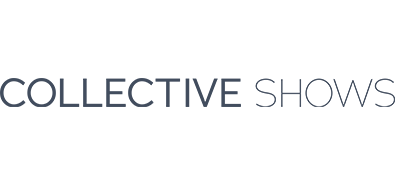We followed up with SurfStitch co-founder Lex Pedersen to find out more about Surfstitch’s recent acquisition of U.S. online retailer Swell, and about plans for SurfStitch.
Lex and partner Justin Cameron, along with a group of investors, also purchased Billabong’s 51% share of SurfStitch, which operates in Australia and Europe. Billabong said it will receive A$35 million (U.S. $32 million) from the sale of Swell and SurfStitch when the deal closes.
According to a SurfStitch press release, SurfStitch and Swell have annual sales over A$100 million (U.S. $93 million).
Here, Lex answered some questions for us about the acquisition and what happens next.
Why did you want to acquire Swell?
SurfStitch co-founder Lex Pedersen: We have worked closely with the Swell team for some time and see the strong fit our two businesses have together.
As a global e-commerce business, North America was clearly the next evolution in our growth strategy, and with an already strong brand association and recognition in the marketplace we viewed Swell as an ideal platform to further leverage our global strategy.
We look forward to providing Swell the increased scale and brand opportunities SurfStitch offers today through its assortment of over 600 curated brands, together with utilizing Swell’s unique position in the core surf marketplace
Who are the investors that are now involved in the company?
Lex Pedersen: Justin and myself remain the major shareholders in the SurfStitch business, with a boutique group of Australian institutional money managers, and existing early money investors.
How are the pure play e-commerce markets different in North America, Europe and Australia?
Lex Pedersen: The global markets operate on very similar principals with brick-and-mortar retailers dominating the relative local markets, and only a handful of pure play online operators participating in each region.
Operating online in domestic markets requires localized content, including language and relative product themes based on seasonality.
The U.S. market operates on a closer product demand demographic to Australia/Asia, with Europe predominantly offering more winter-focused product sets.
As we evolve our businesses further, we see the opportunities to work closer with brands to launch new styles and categories in this global marketplace we offer, given we have over 1.5 million people in our database and over 150,000 unique visitors a day to our combined platforms.
One complaint I hear from some brands is about the discounting that Swell does. Any plans to change that, or is that just how the pure play online world works?
Lex Pedersen: I think it has been well documented the challenges Billabong faced over the past 24 months, including excess inventory issues, and Swell was impacted by this.
Moving forward, we plan to move Swell to be more aligned with the inventory strategy of SurfStitch, which generates over 80% of its sales through full-priced transactions. We see no value in participating in a daily deal/ price discounting strategy.
SurfStitch has evolved over the past eight years to be a curator of unique and hard-to-find brands, together with an avenue for larger brands to expose more of their product ranges not making it in front of consumers, because of the strategy of brick-and-mortar retailers to buy tighter or go down vertical product strategies.
We see many opportunities to work with brands in launching their products in new markets we service under shared risk models, which maintain premium engagement with the consumer.
We are looking forward to working more closely with the industry, particularly in North America, as we now operate as a brand-agnostic, independent retail business.
How to you guys plan to integrate the businesses? Are there already some synergies since Billabong owned Swell and had a 51% stake in your business?
Lex Pedersen: We have already commenced our global planning and integration processes. We are lucky to have one of our original shareholders as a partner at Bain and Co. who is working with us on implementing a number of initiatives to enable strong synergy benefits as we combine our organizations.
Having already broadly replicated our Australian business in Europe in relation to IT and inventory management systems, this will be our target focuses initially. I will be moving to the USA in the coming month and am excited about taking on the position of President of SurfStitch USA and working with the Swell team and our brands to implement an exciting new consumer offering to the marketplace.
Now that Swell and SurfStitch are independent from Billabong, will the merchandise mix offered change?
Lex Pedersen: Swell has somewhat been treated as another brick-and-mortar doorway of Billabong and as such we see significant scope to re-invigorate the product assortment.
Clearly the Australian and European businesses have a significantly larger brand and category assortment and we will be working closely with the Swell team and brands to expand this offering.
Justin and myself will be travelling to our global offices over the coming months and meeting with brands to talk more about our strategies and opportunities around new assortments.






